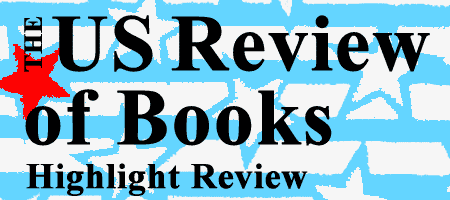
 |
Coming Full Circle: A Sweeping Saga of Conservation Stewardship Across America
by Budd Titlow & Mariah Tinger
Olympia Publishers
Using a blend of historical fiction and poignant truths, the narrative delivers a spirited discourse on conservation, our environment, oneness, and, chiefly, the concept of coming full circle. With authors whose credentials speak for themselves and their commitment to Mother Earth, the beauty of this book lies in how easily it is brought to life for audiences. Titlow, whose background in natural history and photography, and Tinger, who helps future leaders fuse business with sustainability at Boston University’s Questrom School of Business, leave no stone unturned in delivering a truly comprehensive commentary on the origins and imminent threats our planet faces.
The dynamic between colonists and indigenous tribes working in unison for the preservation of all species, a human code of conduct of sorts, is established from the get-go with the stories of notorious trapper Thaddeus Adams and Strong Bow, the son of a tribal chief. Both intersect around the concept of compassion and necessity, with the former opting not to use his musket against a grizzly bear that has meandered into his camp and the latter exhibiting a sense of compassion by not letting his arrow fly toward a mother deer who is nursing her fawns. The tone of appreciating all species and understanding the interconnectedness of every being is set early and carried out throughout the novel.
While the focus is predominantly on the multi-generational family of Adams, the synergy with native Americans at every turn of their journey is pertinent in demonstrating the peace-loving nature of Native Americans. Interestingly, the theme of the ever-moving circle of life manifests itself in myriad forms in the novel, beginning with the westward move beyond the Mississippi for Thaddeus and his family. When his children come of age, they embark on their own journey rife with danger in the form of bandits and inclement weather, such as devastating snowstorms. The destination is San Francisco during the Gold Rush.
The book almost seamlessly incorporates true historical elements within the Adams story, especially after Adams’ kids, Caleb and Ethan, grow their own families. The generations beyond, like Abbey, have direct interaction and collaboration with prominent conservationists and nature lovers like John Muir and Marjory Stoneman Douglas, a staunch defender of nature’s paradise, the Everglades. Getting a chance to see the beauty of nature come to life from the prism of the characters is awe-inspiring, yet it is just as heartbreaking to see the vision of hundreds of carcasses of wild animals hunted for mere greed.
From the renowned Oregon Trail to navigating the Rocky Mountains with all their belongings, the authors use plotlines to help paint a panoramic portrait of nature, both in its majestic form and its more harrowing ones. Though biodiversity and the ecosystem are heavily featured, especially the concept of coming full circle from birth, life, death, and then back to life, there’s a flawless mix of romance (Thaddeus and Minerva headline this aspect of the book) and life as a whole. In many ways, nature bears witness to the lives of the Adams family, tracking their humble beginnings and westward expansion to the younger generation's involvement as wildlife ambassadors. Overall, the authors’ expertise in the topic of conservationism and their knack for storytelling is on full display from start to finish, making for a highly recommended read.
RECOMMENDED by the US Review